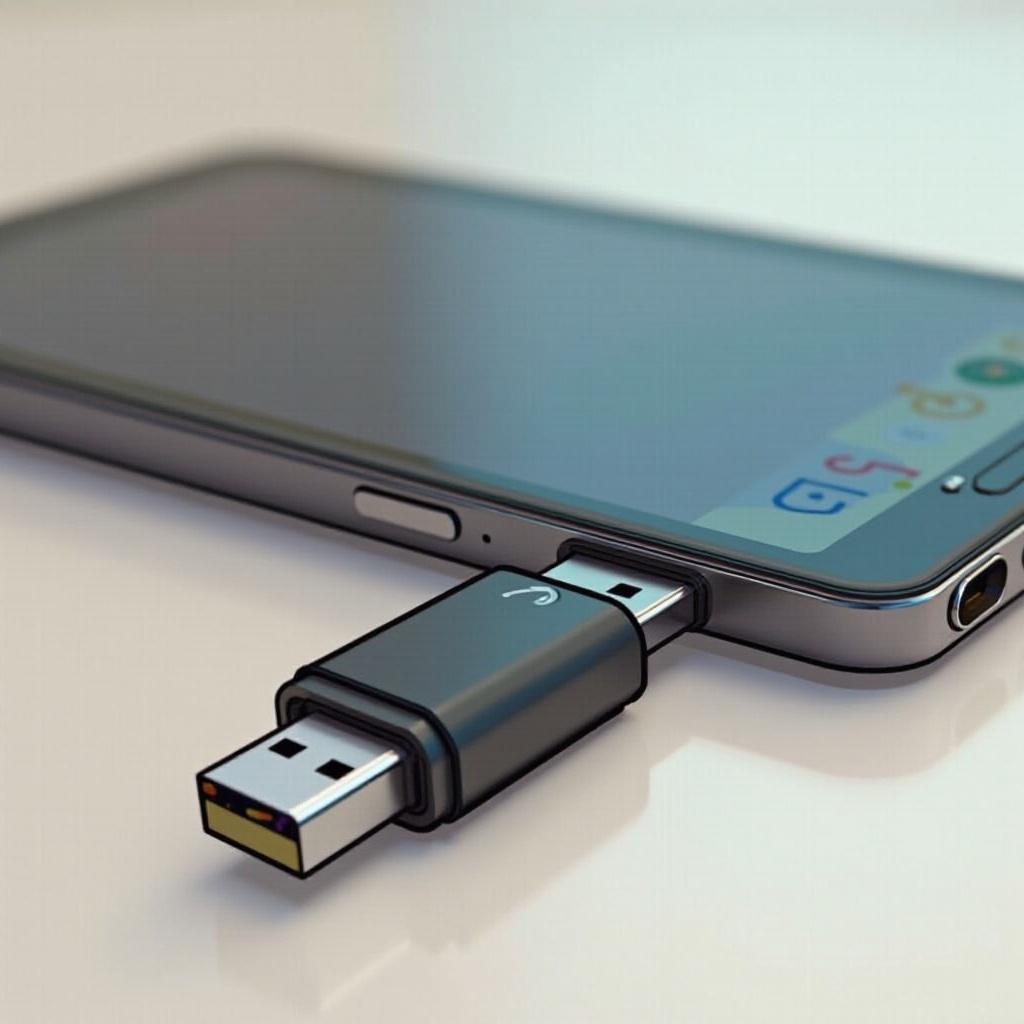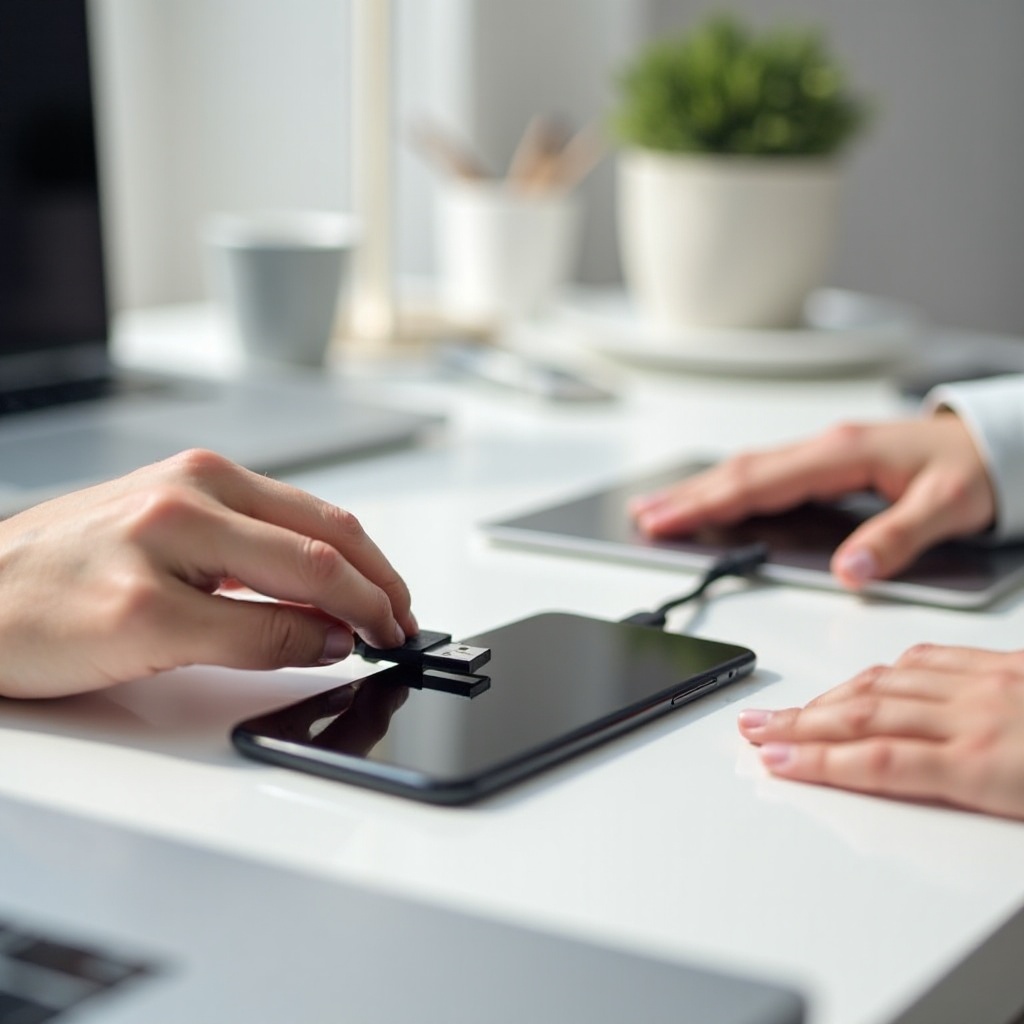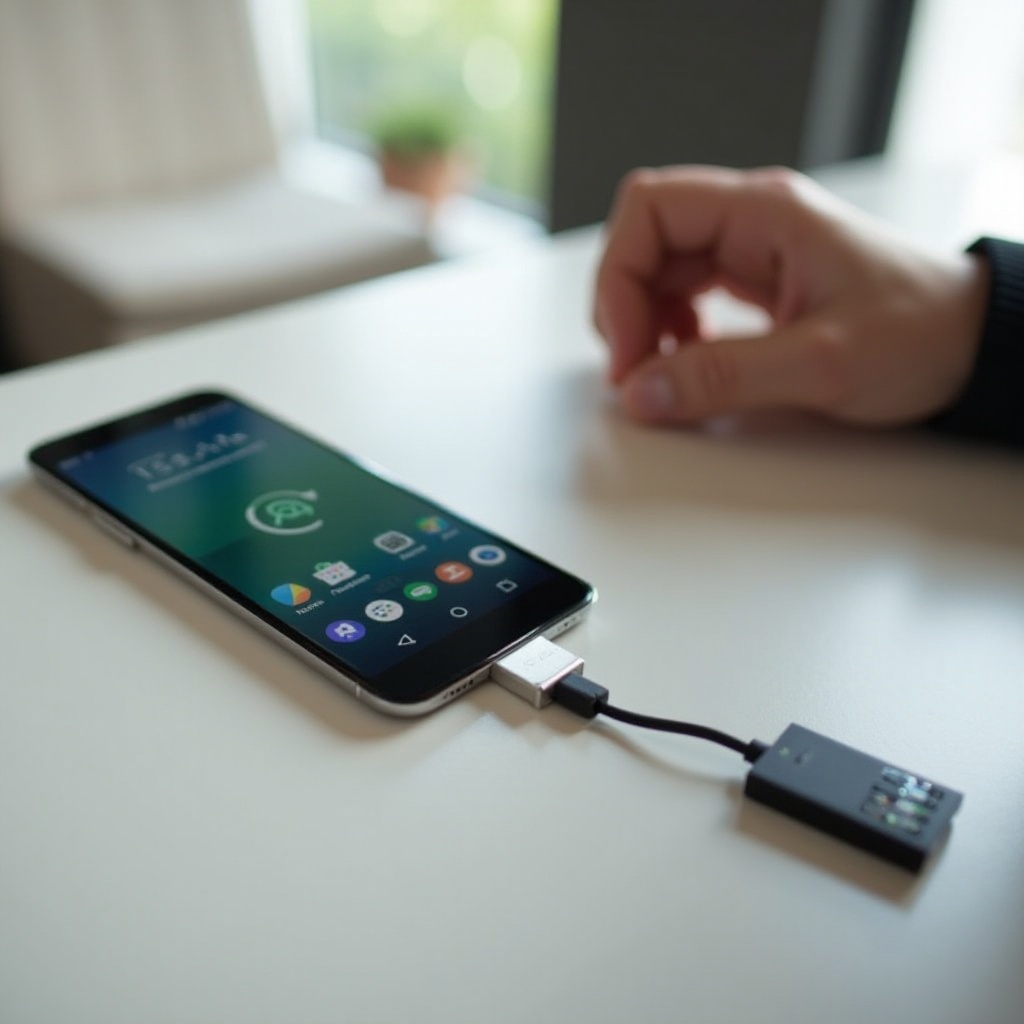How to Connect a Thumb Drive to Your Android Phone
Introduction
In today’s digital age, the ability to connect a thumb drive to your Android phone provides unparalleled flexibility and efficiency. It enables you to manage important files, back up data, and expand your phone’s storage capabilities without unnecessary complexity. Whether it is for transferring media files, documents, or simply having extra storage on hand, knowing how to effectively establish this connection is incredibly useful. This comprehensive guide dives into everything you need to know about compatibility, setup, troubleshooting, and security, equipping you with essential skills for seamless data management.

Understanding Android Phone and Thumb Drive Compatibility
Before you attempt to connect a thumb drive to your Android phone, it is essential to understand the concept of compatibility. Not all Android devices are created equal; specifically, not all support USB On-The-Go (OTG). This technology is pivotal, as it allows your phone to act as a host and thus, read data directly from USB devices without needing a computer. Checking your phone’s compatibility is simple: look up the specifications in the manufacturer’s description for OTG support, or consult your user manual.
Furthermore, take note of the formatting requirements of your thumb drive. Android phones typically support FAT32 and exFAT formats. A thumb drive formatted in NTFS might not be recognized by your device, in which case reformatting would be necessary. Remember, reformatting erases all existing data, so it’s wise to back up important files first. Grasping these compatibility issues early on can prevent annoying connection problems down the road and streamline your file transfers.
Essential Tools You’ll Need
Having the right tools is critical when connecting a thumb drive to an Android phone. Here’s what you’ll need to set up efficiently:
-
OTG Cable or Adapter: Choose a compatible OTG cable or adapter that fits the charging port of your phone. These can be easily found online or in electronics stores.
-
Thumb Drive: Ensure it’s formatted to either FAT32 or exFAT for compatibility with your Android device.
-
File Manager App: While many Android phones have built-in file manager apps, you may download a reliable one like Files by Google for accessing your thumb drive’s contents if necessary.
Each tool plays a crucial role in creating a seamless connection for easy file management. Once these are at your disposal, proceed to connect your thumb drive by following these practical steps.
Step-by-Step Guide to Connect Your Thumb Drive
Connecting a thumb drive to your Android phone is straightforward if you follow these steps:
-
Check OTG Compatibility: Verify your phone supports OTG as covered in the earlier compatibility section.
-
Connect the OTG Cable/Adapter: Insert the OTG cable into your phone’s charging port.
-
Insert the Thumb Drive: Connect your thumb drive to the other end of the OTG cable. Ensure it is securely attached.
-
Access the Files: Launch your file manager app. Your thumb drive should appear in the storage section. Tap on it to browse its files.
-
Manage Your Files: You can now transfer files between your phone and the thumb drive.
Following these steps ensures a successful connection and streamlined file management. Always keep your phone charged to avoid connection interruptions during file transfers.
Best Practices for Managing Files on Your Thumb Drive
Effectively managing files on your thumb drive is vital for keeping data organized and intact. Implement these best practices for a more efficient experience:
-
Organize by File Type: Set up folders and sort files according to type (e.g., photos, documents, videos) for easy retrieval.
-
Regular Backups: Routine backups are crucial. Consider backing up especially critical files to cloud storage for additional safety.
-
Safe Eject: Always safely eject your thumb drive via your phone’s settings to avoid corrupting your data.
-
Monitor Storage Space: Regularly check the available storage to prevent running out during transfers.
Adopting these practices makes file management much easier and minimizes the risk of losing important files during transfers.

Troubleshooting Common Connection Issues
While the connection process is usually smooth, issues may arise. Here are some common troubleshooting steps:
-
Invalid Format: If your phone doesn’t recognize the drive, check its format and reformat it to FAT32 or exFAT if needed.
-
Improper Connections: Ensure both ends of the OTG cable are properly secured. If problems persist, try a different cable.
-
Power Limitations: Some drives may require more power than the phone can provide. Using a powered USB hub can help.
-
Software Glitches: A quick restart of your phone may resolve connection issues if hardware checks out.
These troubleshooting methods can help reinstate connectivity, ensuring seamless data access and file management.

Security Tips for Using Thumb Drives with Android Phones
When connecting thumb drives to Android phones, security should never be overlooked. Here are some crucial security tips:
-
Regular Virus Scans: Use reliable antivirus software to consistently scan your thumb drive for potential threats.
-
Encrypt Sensitive Information: For sensitive files, use encryption before storing them on the drive to enhance security.
-
Stick to Trusted Devices: Avoid unknown thumb drives, as they may carry harmful software.
-
Software Updates: Keep your phone’s OS updated to exploit the latest security improvements.
By prioritizing these security tips, you safeguard your data and maximize the safety of your transactions on Android devices.
Conclusion
Connecting a thumb drive to your Android phone offers a practical solution for managing and transferring files. When equipped with the right tools and a solid understanding of compatibility, alongside implementing effective security measures, you can master this process effortlessly. With the guidance outlined here, transform your Android phone into a versatile data hub, greatly enhancing its overall functionality.
Frequently Asked Questions
Can all Android phones connect to a thumb drive?
Not all Android phones support OTG connections. Verify OTG compatibility in your device specifications.
What should I do if my phone doesn’t recognize the thumb drive?
First, check the thumb drive’s format for compatibility. Secure the connections and consider using a different OTG cable if needed.
Is it safe to store sensitive data on a thumb drive connected to my Android phone?
With encryption and regular virus scans, it’s safe to store sensitive data. Avoid using untrusted devices to minimize security threats.

